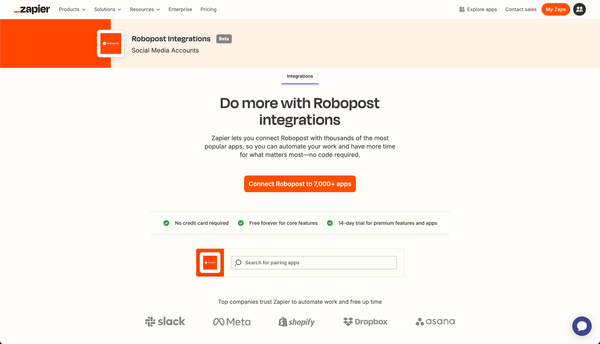Creating a Cohesive Social Media Marketing Plan: A Step-by-Step Guide
Master social media marketing with our step-by-step guide to creating a cohesive strategy for success.

In the digital age, a well-orchestrated social media marketing plan is crucial for connecting with customers and achieving business goals. This article offers a step-by-step guide to crafting a cohesive social media strategy that aligns with your business objectives, resonates with your target audience, and adapts to the ever-evolving social media landscape.
Laying the Groundwork for Your Social Media Strategy

Identifying Your Core Objectives
Before diving into the vast ocean of social media, it's crucial to anchor your strategy with clear objectives. Identify the 'why' behind your social media efforts to ensure every post, tweet, and share contributes to your overarching business goals.
Aligning Social Goals with Business Objectives
To ensure that your social media efforts contribute effectively to your company's success, it's important to align your social media goals with your business objectives. This alignment guarantees that every tweet, post, or story advances your broader strategic goals, such as increasing revenue or enhancing customer engagement.
- Conduct a Social Media Audit: Begin by evaluating your current social media presence. Are your accounts reflecting the company's mission and values? Are they targeting the right audience? This step is foundational for creating a cohesive strategy.
- Craft Relevant Content: Your social media posts should be more than just attention-grabbing; they need to be deeply connected to what your audience seeks from your brand. This relevance is key to driving meaningful engagement that supports your business goals.
Consult the company's wider strategic goals when setting your social media objectives. This ensures that your social media strategy is not just a parallel effort but an integral part of your business growth.
Setting SMART Goals for Measurable Success
To ensure your social media marketing strategy is on track for success, it's crucial to set SMART goals—Specific, Measurable, Achievable, Relevant, and Time-bound objectives. For instance, rather than a broad aim like 'increase brand awareness', a SMART goal would be 'to boost brand recall by XX% within the next quarter among the target demographic'.
Here are some steps to consider when setting your SMART goals:
- Define clear, quantifiable targets, such as gaining 1,000 new email subscribers this quarter.
- Assign tactical goals to social managers, like sharing a subscription link in a specific number of posts daily.
- Measure the ROI of your social media activities to ensure they're yielding tangible results.
- Continuously track and optimize your efforts to increase engagement and meet your objectives.
Understanding and Connecting with Your Audience

Defining Your Target Demographic
Understanding who you're trying to reach is the cornerstone of a successful social media strategy. Knowing your audience's demographics, needs, and online behaviors is essential for crafting content that truly resonates. Start by analyzing your existing followers to gain insights, and then expand your research using surveys, competitor analysis, and online community interactions.
- What are their age groups?
- Where are they located?
- What interests do they have?
- What are their common pain points?
- Which social media content do they engage with most?
The goal is not just to understand who your audience is, but also how they interact with your brand across different platforms. This nuanced understanding allows you to tailor your approach for maximum impact, ensuring your message reaches the right people at the right time.
Analyzing Audience Behaviors and Preferences
Once you define your brand's target demographic, it's important to analyze their behaviors and preferences. This involves looking beyond basic demographics to understand the deeper aspects of your audience, such as their pain points and the types of content they engage with most frequently.
Optimizing and Managing Your Social Media Presence

Choosing the Right Platforms for Your Brand
Selecting the appropriate social media platforms is also important for the effectiveness of your marketing strategy. Focus on quality over quantity by identifying where your target audience spends their time. It's not about being present on every platform; it's about being present where it counts.
When considering which platforms to use, take into account the demographics of your audience, such as age groups and interests. For instance, Instagram and Pinterest are ideal for younger audiences with a penchant for visual and lifestyle content.
The digital landscape is always evolving. Keeping an eye on digital trends and being an early adopter of new platforms can give you a competitive edge. It's not just about where your audience is now, but also where they could be moving towards in the future.
Utilizing Tools for Efficient Social Media Management
In the digital age, efficient social media management is pivotal for maintaining a strong online presence. Third-party tools like Robopost are indispensable for businesses aiming to streamline their social media strategies. These platforms offer centralized dashboards for managing multiple accounts, scheduling posts, and analyzing performance metrics.
The right tools can significantly reduce the time spent on manual tasks, allowing you to focus on strategy and engagement.
Social media management encompasses a variety of tasks, each requiring specific tools for optimal performance:
- Social Analytics: Tracking and interpreting data to refine your strategy.
- Social Engagement: Interacting with your audience to build relationships.
- Social Publishing: Scheduling content to maintain a consistent online presence.
- Social Listening: Monitoring brand mentions and industry trends.
- Social Automation: Using AI to handle repetitive tasks efficiently.
- Social Collaboration: Coordinating with team members for cohesive campaigns.
Integrating these tools with your social media platforms enhances your ability to manage and measure your online footprint effectively. From Facebook to TikTok, each platform offers unique management features that, when utilized correctly, can lead to a more impactful social media presence.
Measuring Performance and Adjusting Tactics
To ensure your social media marketing plan remains effective, make data-informed adjustments. Utilize the analytical tools provided by social media platforms to gain insights into your campaign's performance. This data is invaluable for refining your strategy to better resonate with your audience and meet your marketing goals.
By analyzing metrics such as engagement rates, click-through rates, and conversion rates, you can identify which content performs best, optimize posting times, and determine the most effective platforms for reaching your target demographic.
Focusing on community building and engagement, as sparking conversations and building relationships are key to a successful social media presence. A social media management tool can streamline your efforts, allowing for more efficient tracking and optimization across various networks.
Building Engagement and Fostering Community

Encouraging User Interaction and Feedback
To foster a vibrant online community, it's essential to encourage user interaction and feedback. This not only enhances the user experience but also provides valuable insights into customer preferences and behavior. Here are some effective strategies:
- Respond promptly to comments and messages to show that you value your audience's input and to keep the conversation going.
- Create interactive content, such as polls, quizzes, and Q&A sessions, to engage users and invite their participation.
- Highlight user-generated content to acknowledge and reward your community's contributions.
By prioritizing engagement, you create a dynamic environment where users feel heard and appreciated, which can lead to increased loyalty and advocacy for your brand.
As social media platforms evolve to reward authentic behavior, social media engagement has become a vital part of any marketing strategy. Utilize analytics tools to understand your audience's interests and tailor your content accordingly. Partnering with an agency can also provide expertise in community building and engagement.
Summary
- A strategic social media marketing plan can enhance brand loyalty, increase brand recall, and keep you ahead of the curve in a rapidly changing digital environment.
- Defining SMART goals is the foundation of a successful social media strategy, ensuring objectives are specific, measurable, achievable, relevant, and time-bound.
- Deeply understanding your target audience allows for the creation of content that truly resonates, fostering meaningful connections and community.
- Efficient social media management and performance measurement are essential for optimizing your strategy and ensuring your efforts contribute to business success.
- Continuously adapting your strategy based on audience feedback and data analytics is key to maintaining relevance and achieving long-term social media marketing goals.
